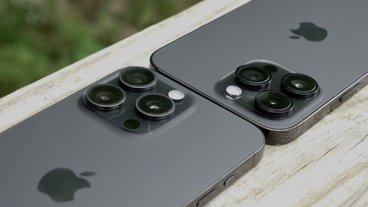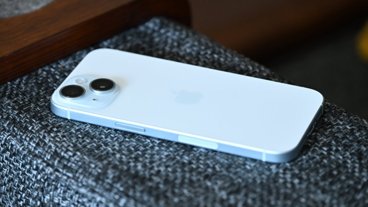USB-C cable shopping for an iPad or Thunderbolt 3 Mac is still a nightmare for consumers
USB-C is the future of computer connectivity, but in the two years we've been using it there remains a great deal of confusion over USB-C, Thunderbolt 3, USB 3.1, and what any given cable with USB-C connectors is capable of. AppleInsider breaks it all down again, makes some specific cable recommendations, and talks about why we think it isn't the last time we're going to have this conversation.
Apple introduced USB-C to its user base with the Retina 12-inch MacBook. At the time, it was in essence a basic USB port that could power the Mac from an external source, yet limited to USB 3.0 speeds of 5Gbit per second. It was officially called USB 3.1 type C Generation 1.
The same physical port was used in the 2016 MacBook Pro refresh, offering a faster, more capable Thunderbolt 3 connection with the same USB-C physical connector. And now, the MacBook Air and Mac mini has Thunderbolt 3, and the iPad Pro is a USB 3.1 type C device, instead of Lightning.
Two years down the road, let's take a look at what Thunderbolt 3 and USB-C means to Apple users. And, we'll try to ease some of your pain if you're in the middle of the battle.
USB-C versus USB 3.1 versus Thunderbolt 3
Put simply, and we cannot emphasize this strongly enough, USB-C as a term by itself means nothing about data speed or charging ability — it is literally, and only, a description of the physical connector.
Thunderbolt 3 at 40Gbit per second has to be USB-C at both ends. USB 3.1 at 5Gbit per second or 10Gbit per second does not. Both share the same physical USB-C connector for the host device, though.
Complicating matters somewhat, some Thunderbolt 3 cables can function as a USB 3.1 type C cable — but not all can. A USB 3.1 type C cable is never a Thunderbolt 3 cable, despite having the same connectors.
Also, not every USB-C cable — be it Thunderbolt 3 or USB 3.1 Type-C — is capable of providing 100W that is allowed in the specification. In fact, between poor quality cabling available at multiple venues, terrible cable markings, and Apple's obsession for plain white cabling, this is more confusing now, with no improvement in the last two years.
Where Apple's choice fits in
With the MacBook, the MacBook Pro since 2016, and now the MacBook Air and iPad Pro, Apple includes a USB-C charging cable. A 15-inch MacBook Pro cable is rated for 87W when plugged into the appropriate MacBook Pro adapter. It can be used on the MacBook and 13-inch MacBook Pro at appropriate wattage.
The converse is true, but the combination will only supply charging power of the lowest rated component, be it cable or AC adapter. For example, an 87W power adapter with a 60W-rated cable will only provide 60W to the host computer.
Simple enough. But, the Apple-supplied cable is only capable of USB 2.0 speeds, and is in no way a Thunderbolt 3 cable. This isn't unique to Apple, though — most high-power USB-C cables found on Amazon are only capable of USB 2.0 speeds.
Confusion still reigns
We've had a pile of very short Thunderbolt 3 cables pass through the testing lab while we've gone through the docks, eGPUs, and other Thunderbolt 3 peripherals. None of them arrived clearly labeled on the cable itself. Some are capable of even 100W. Some aren't. So, that's a problem. We get around that with careful sorting, color-coding, and hanging on a pegboard — but admittedly a surplus of Thunderbolt 3 cables still isn't a common problem.
Plus, at present, there is no chance a Thunderbolt 3 device will connect at all with a USB 3.1 type C cable, despite the cable fitting and even possibly providing power to the peripheral device. This may change for newer peripherals, as a change in the spec and a modernization of controllers will allow for failback, meaning a Thunderbolt 3 peripheral will ultimately be able to use a USB 3.2 Type C cable for connectivity, but at the slower speed that the protocol allows.
Most Thunderbolt 3 accessories come with 18-inch compatible cables, but in our experience they are mostly useless because they are cripplingly short. Users shopping for longer cables aren't being greeted with universal language, or with complete specifications in every case.
Short versus long, passive versus active
The short Thunderbolt 3 cables that come with docks and other peripherals are generally passive cables. To keep costs down, passive cables are no-frills cables, and because of it, runs longer than 18 inches have slow transfer speeds for connected devices. This can cause problems in high-bandwidth situations like docks or the LG 5K Ultrafine display.
Short, passive Thunderbolt 3 cables, such as those packed-in with docks, are very nearly always fully compatible with USB 3.1 type-C peripherals. But, like we said, the length isn't that handy.
Thunderbolt 3 runs longer than 18-inches can be passive or active. The passive ones have lower speed, with the max data rate hitting about 20Gbit/second at two meters of cable length. However, at present, active cables contain transceivers to regulate the data transfer through the cable. At the same two meters, speed is still at the maximum of 40Gbit/second.
Passive cables maintain USB 3.1 type-C compatibility. Active ones generally do not. There is no correlation between passive or active, and maximum wattage.
And, that USB 3.2 speed failback thing we talked about a few paragraphs ago? It likely won't be backwards compatible to older cables or peripherals.
Choose wisely...
We presented a picture earlier in this article. Here it is again.
In the above picture, left to right: 2 meter 60W active Thunderbolt 3 cable, 2 meter 100W active thunderbolt cable, 2 meter 60W passive Thunderbolt 3, 2 meter 60W USB 3.1 Type-C cable, 2 meter 60W USB 2.0-speed Type-C Apple charging, 2 meter 87W USB 2.0-speed Type-C Apple charging, and a 0.5 meter passive 100W Thunderbolt 3 cable capable of 40Gbps. All of the markings on each cable are shown in the picture.
A mess, that doesn't have to be
We like the concept of USB-C. We love Thunderbolt 3 as it finally fulfills Apple's vision of one cable from a computer to absolutely everything else that it's tried several times before. But, buying the right cable remains a nightmare for consumers.
Looking for the data rate isn't enough when shopping for Thunderbolt 3. Searching on 40Gbps doesn't tell you if the Thunderbolt 3 cable in question is passive or active. And, even after you get the cable, if you toss it in your snake's pit of cables in that box you know you have in the basement, you won't know what the cable is capable of if you fail to label it.
The industry has spoken out about the issue, but hasn't mandated the use of the iconography leaving it up to the user to be clear on what's what. This needs to be mandatory, and permanently affixed to the cable somehow, with common labels that at the very least can be looked up.
Enter Titan Ridge
About a year ago, Intel started shipping the Titan Ridge chipset for Thunderbolt 3. We're not sure if it made it better or worse overall, but for the first time, a universal USB-C cable, capable of USB 3.1 type C or Thunderbolt 3 supplying up to 100W on a two-meter cable run is possible at a cost.
This universal cable isn't here yet, though. It's coming, and we'll let you know when it arrives.
Here's what we recommend
Hard drives, even most small-scale RAID arrays with them we've examined, aren't that demanding. Passive, long Thunderbolt 3 cables, such as that from Plugable at 20Gbps, work fine and you won't see a speed hit. They also work with USB 3.1 Type-C printers, and other accessories. Obviously, if you have a RAID of SSDs or an external NVMe drive, you'll want 40Gbps, though.
After much trial-and-error, and some of our favorite cables not coming back after running out of stock, we presently like the Cable Matters 40Gbps 6.6 foot cable. It has reliable connections, can provide 100W of power. It isn't cheap at $57.99 at the time of this revision, but we highly recommend it for the most demanding applications. And, as a reminder, this cable is not compatible with USB 3.1 type C applications.
And, if you just need USB 3.1 Type C, just get that. Don't pay the premium for Thunderbolt 3. Be mindful of reviews in addition to maximum power limitations if you're going to charge a 15-inch MacBook Pro. We like the Anker Powerline II USB-C to USB-C 3.1 gen 2 cable for most of our connectivity and power needs given that it is rated for 100W and full 10Gbit/sec speed — but it is only three feet long.
As a quick cheat-sheet: Active Thunderbolt 3 cables are high-speed but expensive, and mostly lack USB 3.1 Type-C compatibility — but very new ones might retain it. Passive Thunderbolt 3 cables are generally short for best performance, and nearly always maintain USB 3.1 Type-C compatibility. Neither passive nor active imply anything about maximum charging power, nor are they necessarily labeled on the cable indicating what they are capable of delivering.
But, even now, two years later after Apple adopted USB-C and a year after we first started talking about this particular conundrum, regardless of what you buy, come up with your own solution for labeling what's what, and what it can do. It'll save you time in the long run.
 Mike Wuerthele
Mike Wuerthele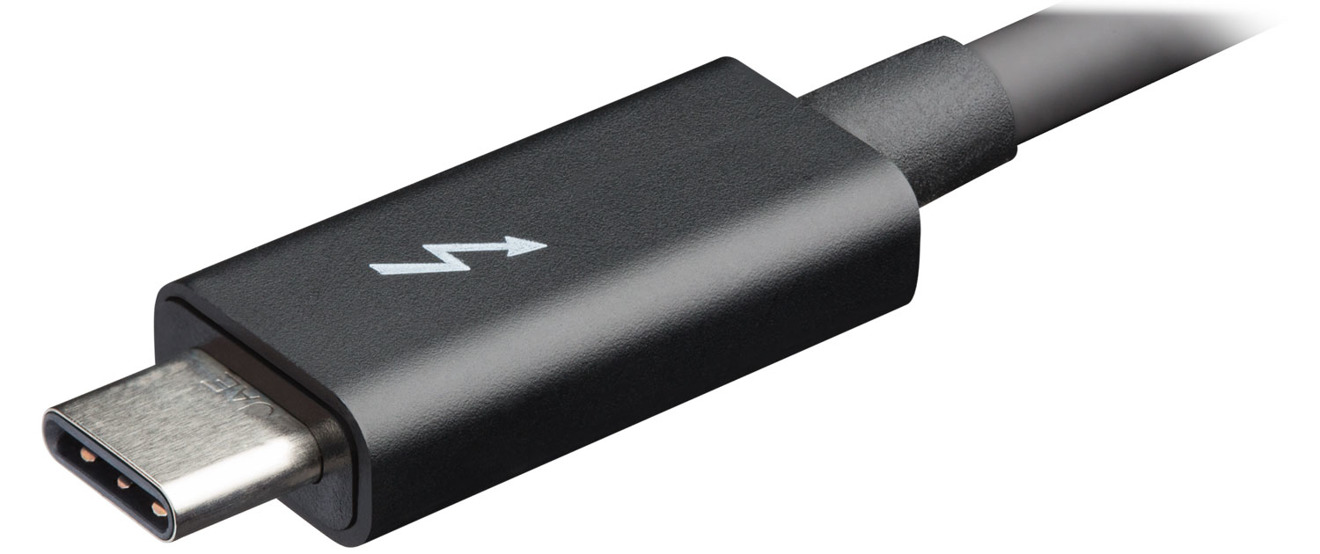
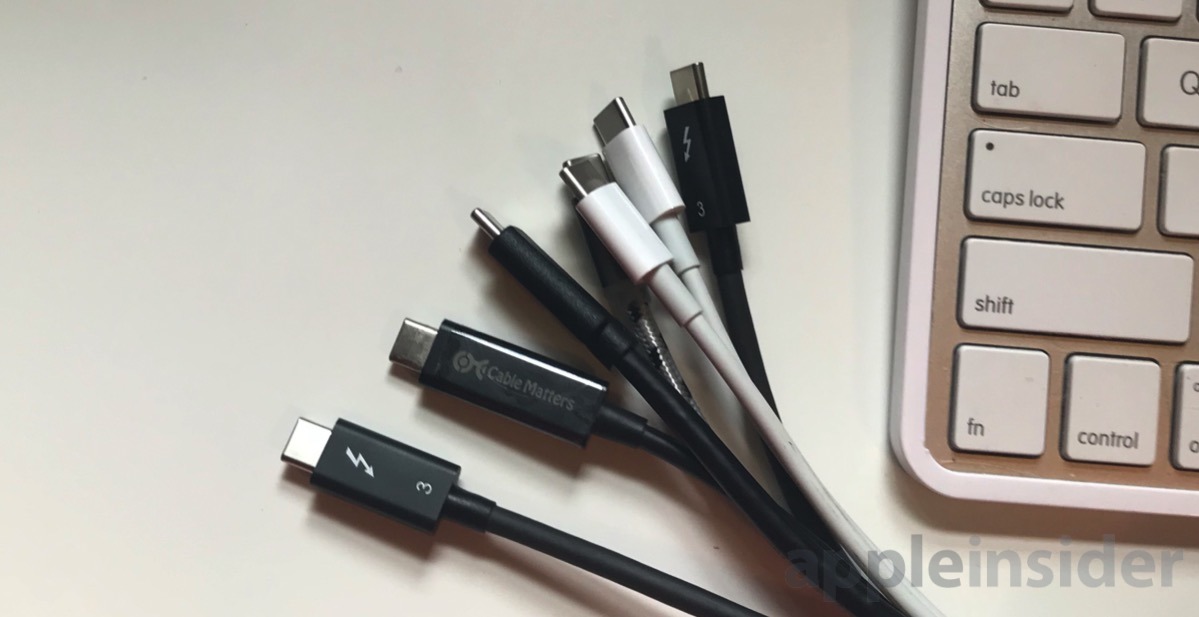
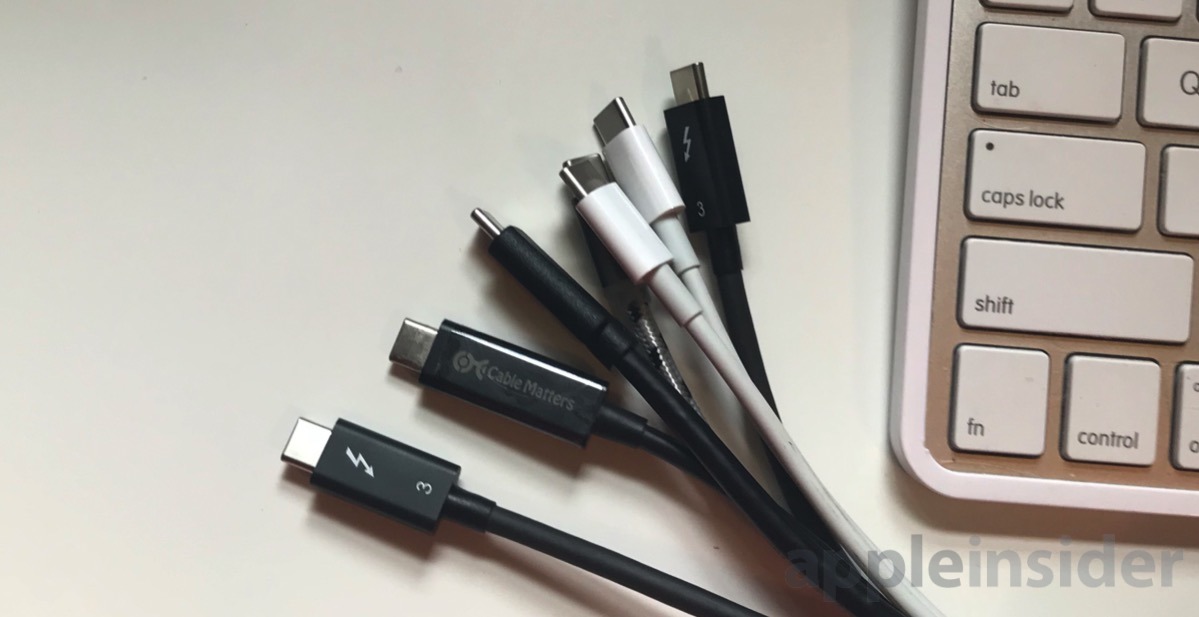











 Marko Zivkovic
Marko Zivkovic
 Amber Neely
Amber Neely
 Christine McKee
Christine McKee
 Malcolm Owen
Malcolm Owen
 Mike Wuerthele and Malcolm Owen
Mike Wuerthele and Malcolm Owen

 William Gallagher
William Gallagher
